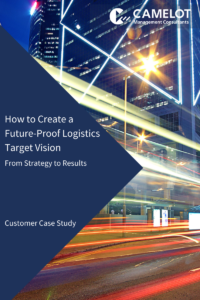Tailored services, SKU proliferation, lot size one – does that sound familiar?
If it does you’ve either already segmented your supply chain or you are familiar with the topic. You’ve probably evaluated or even achieved the benefits segmented supply chains offer:
- Higher revenue due to the tailored offerings addressing differentiated customer needs
- Higher margin due to improved allocation of products and resources, efficiently steering bottlenecks in the supply chain
- Process cost savings in order-to-cash or in supply chain planning due to more process automation
- Supply chain cost savings due to larger and less expedite shipments
- Improvement of working capital due to streamlined inventories
And that’s just to name a few examples. But then, you are surely also aware of:
- the cumbersome process to get there?
- the emotions in decision-making to cluster customers & products?
- the efforts to keep the segmentation updated?
Leading companies first put more focus on data, less on opinions. They apply cutting-edge segmentation approaches, backed by various techniques such as machine learning, artificial intelligence or best practices in data science to overcome these issues.
These techniques add tremendous value, because they
- automatically cluster the products and customers into segments where natural break points in the segmentation criteria exist and hence aid in setting up the segmentation.
- provide neutral ground for decision-making, learning from past decisions and providing guidance for an overall better decision-making.
- propose the segmentation criteria according to the ones that have proven to improve cost base or boost margins in the past, which leads to less efforts updating the concept.
- propose updates to the segmentation whenever customers or products change their segmentation footprint – leading to less manual efforts and shorter update cycles.
- relate data across functions and departments to utilize the information present in the whole organization instead of functional information silos.
- relate data that is known to the company and new data elements (SNEW) that most companies currently do not include. For instance, agrochemical companies can enrich supply chain planning results with the impact of weather forecasts. Consumer goods companies can integrate customer feedback on products into the determination of lifecycle steps and hence the supply chain segmentation.
What are the benefits of these techniques?
In the long run, these techniques will be integrated into the intelligent enterprise solution, specifically in the digital core of enterprises for enhanced customer experience. But already today, these techniques successfully support supply chain segmentation approaches, for instance by means of chatbots to take orders or complaints. They sense demand via predictive analytics and shape demand by analyzing customer response to changes in recipes / bill-of-materials or service levels. They identify risks in the supply chain across functions and regions to allow for earlier mitigation actions. The list of use cases is long and grows practically day-by-day.
One of the key challenges for supply chain segmentation in the intelligent enterprise solution will be the balance of strategic, tactical and operational levels. Especially the integration of decisions into day-to-day operations is critical. A customer or a product cannot switch segments from day to day, the latency and the manifold impacts of the strategic decisions to operations create an additional layer of complexity to manage. It is rewarding, though, because eventually, it’s not going to be the company with the best product in terms of design, functionality or cost that prevails, but the one that is there for the individual customers – where, when and how they need it.
We would like to thank Dominik Hartung for his valuable contribution to this article.

